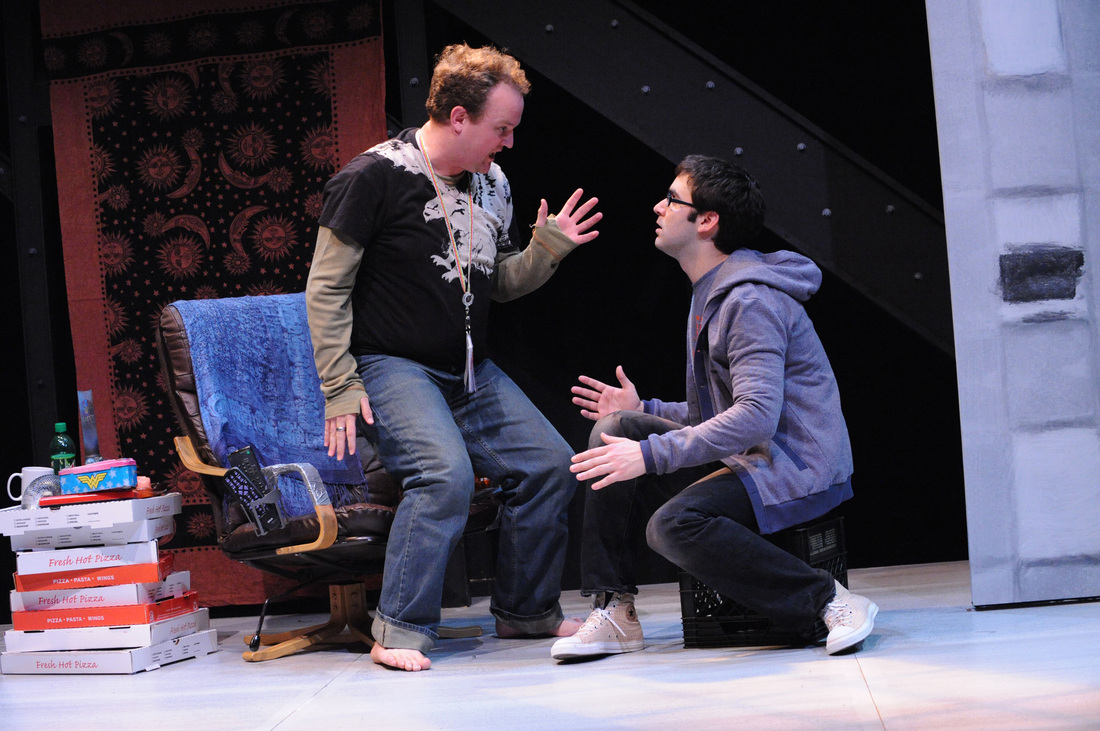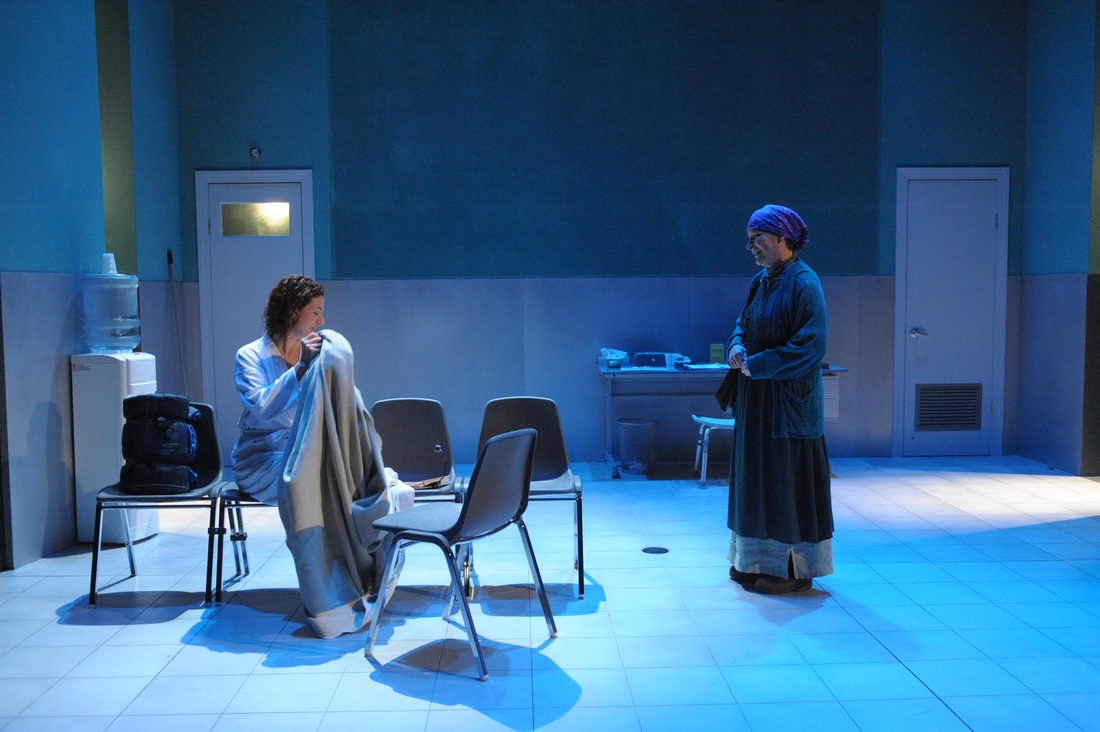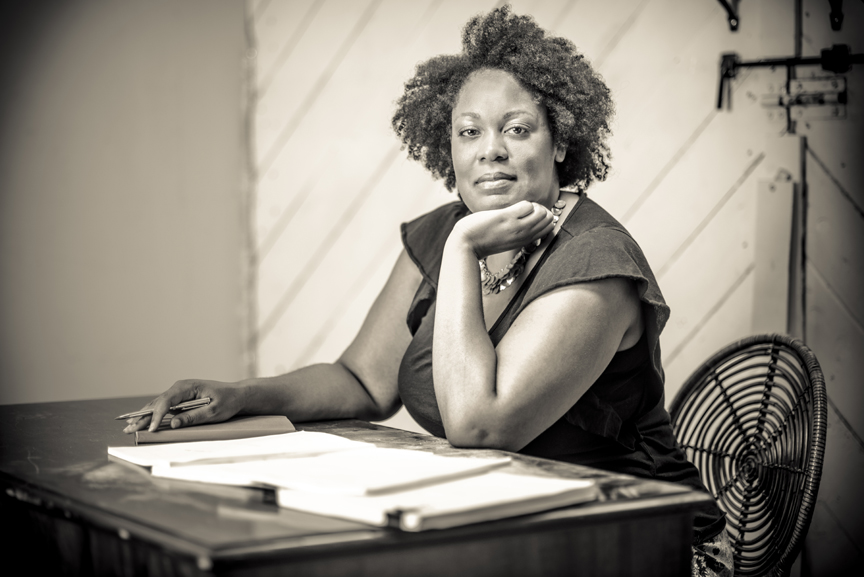|
JACQUELINE LAWTON: Why did you decide to get into theatre? Was there someone or a particular show that inspired you?
SHIRLEY SEROTSKY: I’ll speak in terms of artistic leadership for this one. The concept of an artistic director was one that I first came to understand in college. As a directing student at the North Carolina School of the Arts we had the opportunity to do at least one Assistant Directing gig away from school, my year they sent us to Atlanta to assist on a production at the Alliance Theatre. There we met with ADs, directors, and other theater artists in town—including, of course, the Artistic Director of the Alliance at the time, Kenny Leon. I remember him talking about his first years as AD of this major institution, helming what was seen as a radical overhaul—which transformed the theater from a safe regional theater catering mostly to white suburban audiences to a much more dynamic, risky, and culturally diverse theater. He reflected that while these changes alienated some audiences (indeed, subscription numbers dropped noticeably) changes were necessary to achieve a stronger future vision for the company. So, his leadership very much put Alliance on the map as a theater to reckon with, and yet others saw the change as a failure, because subscriber numbers waned. This conversation really opened my eyes to the challenges an artistic leader faces. How do we balance priorities? How do we challenge audiences without alienating them? When must we let patrons go? What is growth and what is stagnation—artistically, financially, and in terms of infrastructure? And why does growth in one of these areas sometimes hinder the growth of another? This was an early, eye-opening conversation about season planning and artistic mission for me, one that—fourteen years later--I still think about. JL: How long have you served as Associate Artistic Director at Theater J both in terms of title and in duties and responsibilities? What drew you to working at Theater J? What keeps you there? SS: I became AAD at Theater J in December 2012, after four and a half years as the Director of Literary and Public Programs. I wrote a letter to Ari Roth in 2005 telling him of my interest in new plays and my admiration for the work Theater J was doing in that arena. A year later he saw my production of TWO ROOMS at Theatre Alliance, and I believe then we corresponded about viewing the Middle East through the lens of theater. I’d visited Israel in 1999, and was blissfully unaware at the time that I was travelling during a rare and precious moment of relative peace. As I caught up on reading about the region while working on that play, I also became aware of the Voices from a Changing Middle East festival at Theater J. I was a child of the 1980s and remember pretty vividly the final years of cold war fear. Around the turn of the 2000s it hit me that this would be the fear we would live with for the next generation, perhaps for the rest of my life—the uncertainty and trepidation that comes with the conflicts in the middle east and the rise of religious extremism in locations around the world. It seemed to me at the time that doing theater that looks at these big questions of faith, geopolitics, and humanity—in a way that is not boring or didactic --is the most important thing we could be doing as artists. I still feel that way. JL: What is the most valuable lesson you learned so far? Also, what traits do you feel a successful Artistic or Associate Artistic Director should have to support the health and growth of an organization? SS: The thing that continues to blow my mind about being an artistic leader is how many different groups of people one has to consider. Sure, directing requires great collaboration, and guiding a vision while communicating with actors, designers and the producing theater is a challenge. But add to that a board, marketing and development teams, regular patrons and friends of the theater, and any partner organizations or departments, and this becomes a sometimes daunting venture requiring good listening, even better communicating, awesome flexibility, lots of meaningful gut checks, and an amazing amount of patience. JL: What excites you most about being an Associate Artistic Director? What do you feel your greatest challenges will be? SS: See above. It can be a comfort to retreat into an artistic bubble and not have to worry about budgets or grants or future planning. But the more I am involved with the big-picture conversations here at Theater J, the more I learn and the more I am challenged. These are both great things. And because of the global focus of the work we do here at the J, I find myself constantly realizing that I need to LEARN MORE. About history, about art, about music, about the Middle East, about the Sudan, about the 1970s, about theology, about the Civil War, about Jim Crow, about Sarajevo, about superheroes, about philosophy…and the list goes on. And I love this. JL: Does your work as an Associate Artistic director pay the bills? If not, what else did you do? How do you balance your role leading an organization with your work as a director? Are you ever able to direct outside of your company? SS: It does pay the bills. I also add some freelance directing and teaching into the mix. And yes, I am able to direct outside of Theater J, and find that when I hit the balance right the my work at the J cross-pollinates the work I do elsewhere in gratifying and meaningful ways. JL: Looking at your body of work as an Associate Artistic director and a director in the community, how conscious were you of selecting plays by women or people of color when deciding your season? Also, when it comes to hiring administrators, designers and other directors do you take race and gender into consideration? SS: Very conscious, but in a way that isn’t necessarily about meeting quotas or percentages. It’s something more innate than that for me. Eight of the eleven of us here at TJ are women, so the female voice within the room is very strong. Our board is primarily women, the CEO of the DCJCC of which we are the resident theater company is a woman, I think if we ever pitched a season of all male playwrights or directors it would show an odd and unfathomable disconnect. Our representation of artists of color is trickier because we are a culturally specific theater and there’s tended to be a specific idea of what some who is Jewish looks like, or what entails a “Jewish-themed” play. I have watched that idea expand and swell in the time I’ve been here, and I’m glad. JL: DC audiences are . . . SS: Not afraid to tell you what they think. JL: DC actors and designers are . . . SS: My best friends and collaborators. JL: DC playwrights are … SS: Storming the castles, in wonderful and important ways. JL: DC critics are . . . SS: Part of the bigger conversation. JL: What advice do you have for an up and coming theatre artists who have just moved to D.C.? SS: SS: See above! Take advantage of the opportunities that this community offers you. Meet like-minded artists that you want to work with, find a community, an artistic family. Hone in on what you, specifically, bring to this art form and know why you do it. Assistant Direct for people whose work you respect and admire—recognize what you like about how they work, and also what you would do differently. Reach out to artists you respect in the community, at all levels. Invite them out to coffee to ask them about what they do and how they do it. More often than not, they’ll say “yes”. Read, see, talk, share. Care about things other than the theater. And I’ll quote the advice that Kathy Bates, the commencement speaker at my graduation from an arts conservatory shared with us: “Get a life”. As in, a life beyond the theater. Care about the world, your friends, your family; find ways other than your work to feed your soul. JL: What's next for you as a director and your company? SS: I start rehearsals for A Man, His Wife, and His Hat by Lauren Yee at the Hub Theatre in March. And Theater J starts previews for David Mamet’s Race of February 6. We’re also holding a center-wide symposium on race that should provide a forum for some challenging conversations over President’s Day weekend, February 16-17.
0 Comments
Your comment will be posted after it is approved.
Leave a Reply. |
My BlogI'm a playwright, dramaturg, and teaching artist. It is here where you'll find my queries and musings on life, theater and the world. My posts advocate for diversity, inclusion, and equity in the American Theatre and updates on my own work. Please enjoy!
Categories
All
Archives
June 2020
Reading List
|



